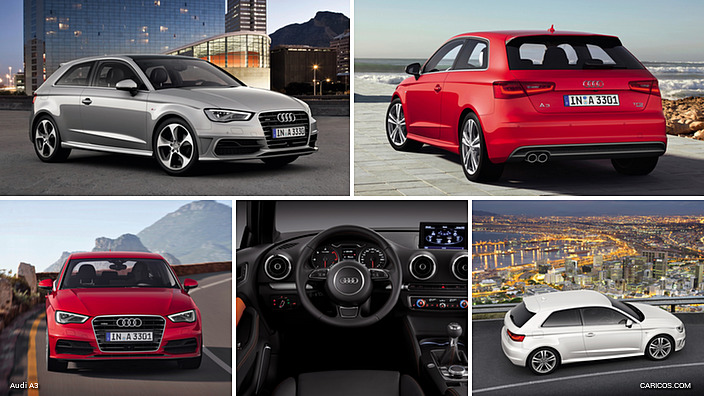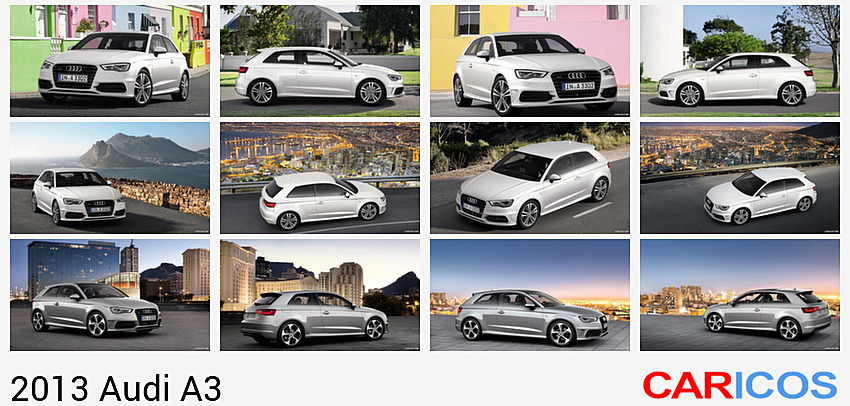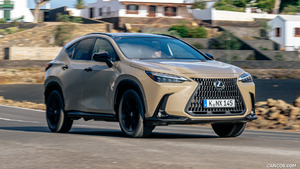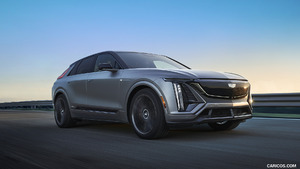2013 Audi A3
The trailblazing Audi hatchback credited with filtering the premium feel-good factor through to the compact class is about to raise the stakes yet again as the all-new A3 debuts in Geneva with an evolutionary new look and revolutionary leaps in quality, technological sophistication and driver appeal. The third generation of the three-door model is the first to break cover in Switzerland, and will open for UK order in spring priced from approximately £19,000 ahead of first deliveries in September.
CO2 emissions of as little as 99g/km in the new A3 have been made possible with the help of ‘Audi ultra’ lightweight technology, which has enabled it to tip the scales an impressive 80 kg lighter than its predecessor. The aluminium front wings and bonnet help in this regard, and contribute to a class-beating kerb weight of just 1,175kg for the 1.4 TFSI model. In terms of dimensions, the new A3 is virtually identical to its predecessor in length and height at 4,237mm and 1,421mm respectively, but it features a longer 2,601mm wheelbase in the interest of dynamic composure and interior packaging. It is also slightly wider at 1,777mm.
The single-frame radiator grille that is typical of Audi dominates the look of the front end, and as before in higher specification models it is flanked by xenon headlamps with LED daytime running lamps, the latest versions featuring a new ‘clasp-like’ solid band which surrounds more of the lens. These will also be optional for other models, and wherever they are fitted the tail lights will also be equipped with LEDs. In the longer term, full LED headlights will also be available, and will be a first in the compact car segment.
 2013 Audi A3
2013 Audi A3
In profile, the pronounced tornado line – a classic element of Audi design – gives structure to the area below the windows, and above the sills a dynamic line rises sharply upward. The gently sloping C-pillars and the roof that sweeps back into a modest spoiler lend the car a distinctly coupe-like air.
At the rear the spoiler edge above the diffuser emphasises the width of the new premium compact, and the inner architecture of the split tail lights is a variation on the headlights’ theme. The tailgate has a sculpted, three-dimensional look, and below it in the diffuser insert are either one or two tailpipes on the left side depending on the engine type.
Innovative interior
The completely redesigned interior of the Audi A3 breaks new ground in the class in terms of quality and design, with standards of materials, workmanship and ergonomics which genuinely push the boundaries at this level. The minimalist ‘floating’ dashboard with its round air vents, elegant climate control panel and redesigned instrument cluster is a highlight, as are the optional 3D colour display for the Driver’s Information System, the ultra-thin electrically retractable MMI monitor and the new electromechanical parking brake which liberates space in the centre console for the optional MMI operating system terminal. In its most sophisticated form – MMI navigation plus with MMI touch – the upper side of the rotary pushbutton in the terminal is designed as a touchpad – another ergonomic innovation. Drivers can input letters and numbers by finger motion as they can in larger Audi models.
Another technical area in which the new Audi A3 will excel is in its new high-performance driver assistance systems. They range from radar-assisted adaptive cruise control to Audi side assist, Audi active lane assist, traffic sign detection, park assist and the Audi pre sense basic safety system.
In the infotainment area too, the latest A3 raises its game significantly with features such as a new optional A3-specific Bang & Olufsen audio system, MMI navigation plus and mobile phone preparation with online services, which brings new ‘real time’ online traffic information and, through a WLAN hotspot, gives passengers access to the Internet while travelling.
Significant efficiency gains
The new Audi A3 will launch with three four-cylinder engines, all of which are essentially new developments. The 1.4-litre and 1.8-litre TFSI engines and the 2.0-litre TDI have outputs of 122PS, 180PS and 143PS respectively. Compared with the previous model, they offer fuel economy improvements averaging 12 per cent.
The 1.8-litre TFSI is linked as standard to a seven-speed S tronic twin-clutch transmission; the 1.4-litre TFSI and 2.0-litre TDI are paired with a six-speed manual gearbox. All engines in this first phase drive the front wheels; quattro permanent all-wheel drive – and further engines, including a 1.4-litre TFSI with innovative cylinder on demand technology – will follow later in 2012.
The completely new A3 chassis has been designed with an optimum balance between comfort, composure and driver appeal in mind. It works with a finely-tuned power steering system with a highly efficient electromechanical drive and an Electronic Stability Program integrating an electronic limited slip differential which makes handling even more fluid and safe at performance limits.
The optional Audi drive select system lets the driver vary the operating characteristics of key components, namely the steering weighting, the throttle response and the transmission shift points (where S tronic is fitted). It can also be upgraded to incorporate control of the optional Audi magnetic ride system with its magnetorheological fluid-filled dampers.
The new A3, which celebrates its premiere at the 2012 Geneva Motor Show, presents the combined technological expertise of Audi in compact format. In its lightweight body, the architecture of its interior and its user interfaces the three-door car is once again setting standards in its class. Its engines impress with their efficiency and power, and the range of driver assistance systems and infotainment solutions is unparalleled in the premium compact class.
Exterior design
The new Audi A3 was designed with succinct lines, and its dimensions are compact. Its length of 4,237 mm and height of 1,421 mm are practically the same as the previous model, but its wheelbase has grown by 23 mm to 2,601 mm. Its front overhang is now shorter, and its width has increased by 12 mm to 1,777 mm.
The defining element at the front of the car is the very sculptural single-frame radiator grille with its six corners; the bonnet continues its lines. Large air intakes at the front reflect the power of the engines.
The headlights are flat and integrate a wave-shaped lower edge. Xenon plus units are either standard or optional depending on version; the LED bands that form the daytime running lights make the A3 unmistakable – especially at night.
On the sides of the body, the sharply delineated tornado line – another classic element of Audi design – gives structure to the area below the windows. Above the side sills, this dynamic line rises sharply upward.
Dynamically flared metal surfaces and large wheel arches lend a powerful appearance to the new A3. The gently sloping C-pillars and the roof that sweeps back into a modest spoiler convey the sporty look of a coupe.
Styling at the rear with the spoiler edge above the diffuser emphasises the width of the new premium compact. The split tail lights – featuring LED technology where xenon plus headlights are fitted – show a variation on the inner architecture of the front headlights. The tailgate has a sculpted, three-dimensional look. The new A3 sports either one or two tailpipes on the left side in its diffuser insert, depending on the engine type.
The Audi ultra lightweight construction principle
Ultra lightweight construction has long been a hallmark of the Audi brand. By no means is it limited to a specific material; instead, the motto is: “The right material in the right place for optimal function.” True to this maxim, engineers developed a multi-material body for the new A3.
Components made of form-hardened and hot-formed steels form a strong structure in the underbody area, A- and B-pillars and the roof arch. In many other body areas, high-strength and ultra-high-strength steel grades are used. The bonnet and wings are made of aluminium, which saves more than nine kilograms in weight.
The lightweight body and downsized engines offer many secondary benefits for the overall vehicle; many components of the chassis, the exhaust system and interior have reduced weights. The A3 1.4 TFSI weighs just 1,175 kg – which is 80 kg less than the previous model and sets an impressive standard in the premium compact class.
The body of the Audi A3 exhibits other strengths. It has a high degree of impact safety; it is rigid and acoustically sound; a noise-insulating windshield is standard equipment, and numerous other measures were taken to reduce interior noise in the new A3, even at high speeds.
Aerodynamic refinements, including a covered underbody and engine compartment, result in a low Cd value of 0.31.
Interior and equipment
The sporty-progressive lines of the exterior are also reflected in the interior of the new A3. As in large Audi models, the cockpit wraps around the driver in a curve. The instrument panel is slender and level; it appears to hover above the visually lightweight centre console that is angled towards the driver.
The first class impression conveyed by the interior of the new A3 is a reflection of stringent Audi quality standards. It is finished in more traditional black or titanium grey, but will also be available in bolder colours such as pashmina beige, chestnut brown and capri orange. There are upholstery options in different qualities of leather and a leather/Alcantara variant.
The rear seats offer space for three passengers, and easy entry is a standard convenience feature. The newly developed front seats offer excellent support and comfort; their low mounting positions emphasise the sporty character of the three-door car. The driver takes a seat behind a new steering wheel design with three or four spokes and multi-function controls, plus shift paddles where automatic transmission is fitted.
The four large, round air vents inspired by jet turbines are worthy of a special mention. By pulling the nozzle at the centre of each vent along its axis, the air stream can be adjusted from draft-free wide dispersion to a directed stream of ventilation air. The air conditioning control panel has a fascia in Piano finish black.
Simple but effective user interfaces characterise the cabin. All of the buttons, switches and controls are positioned intuitively. The Driver’s Information System positioned between the two large round instruments shows all key information, some with richly detailed 3D graphics.
The load area of the new Audi A3 offers a basic capacity of 365 litres; luggage room grows to 1,100 litres when the split rear seatbacks are folded. The load floor can be set at two different levels – either for maximum volume or alternatively as a level cargo floor. A load-through hatch with ski bag, a reversible mat and a storage package for the interior and the load area are available as options.
Numerous options are also available in the passenger compartment, including the LED interior lighting package, a panoramic glass sunroof, sports seats, heated seats, advanced key keyless access, deluxe electronic climate control with economy mode and adaptive light for the xenon plus headlights, which can be supplemented with variable headlight range control.
Drivetrain
At launch, the new A3 will be available with one TDI and two TFSI engines, all of which incorporate many efficiency technologies – direct injection, turbocharging, innovative thermal management and the start-stop system. All three units are ‘downsized’ in the interest of efficiency but deliver performance and response worthy of a larger capacity engine thanks to advanced turbo charging. The benefit of this concept can be seen in fuel economy improvements averaging 12 per cent.
The 1.4-litre TFSI, with its 1,395 cc engine displacement, produces 122PS of power and 200 Nm of torque, the latter available from 1,500 rpm. This engine powers the A3 from rest to 62mph in 9.3 seconds and on to a top speed of 126mph. Its combined fuel economy is an impressive 54.3mpg, equivalent to CO2 emissions of 120 grams per km.
The 1.8-litre TFSI – with an engine displacement of 1,798 cc – produces 180PS and delivers 250 Nm of torque between 1,250 and 5,000 rpm. It combines direct injection with supplemental injection into the induction pipe, varies the valve stroke based on load using the Audi valvelift system and utilises a very elaborate thermal management system to quickly heat the engine after a cold start. It enables the A3 to complete the sprint from rest to 62mph in 7.2 seconds, to reach a 144mph top speed and to achieve a combined economy figure of 50.4mpg, equivalent to 130 g CO2 per km.
The 2.0 TDI with 1,968 cc engine displacement also offers a high-performance thermal management system. Its two balancer shafts were relocated from the oil pan to the crankcase, which clearly improved smooth engine running. Producing 143PS and 320 Nm of torque, this diesel delivers tremendous punch.
The A3 2.0 TDI sprints from a standstill to 62mph in 8.6 seconds and reaches a top speed of 134mph. In the combined cycle test it covered 68.9mpg – equivalent to CO2 emissions of 106 g per km.
The A3 engine line-up will gradually expand to include further highly efficient, low-emissions units. A version with the especially efficient 1.6 TDI engine will debut later in 2012, promising 74.3mpg potential with CO2 emissions of just 99g/km, and models employing alternative propulsion methods such as hybrid, natural gas and Audi e-gas will also be introduced in certain markets. Performance enthusiasts will also be well catered for by a new S3.
At launch, the 1.4-litre TFSI and 2.0-litre TDI engines will be linked to a six-speed manual transmission. In the 1.8 TFSI, the seven-speed S tronic transmission will be standard; the highly efficient dual-clutch transmission integrates a freewheeling function in conjunction with Audi drive select. All of these transmissions transfer power to the front wheels; quattro permanent all-wheel drive will become available later in the year. Its centrepiece is a hydraulic multi-plate clutch which can variably and very rapidly distribute power between the front and rear wheels according to the prevailing conditions.
Chassis
The well balanced chassis of the new Audi A3 combines front suspension featuring a McPherson layout with wishbones, and multi-link rear suspension which absorbs longitudinal and transverse forces independently. Sports suspension which lowers the body by 15 mm will also be available, as will S line suspension lowered by 25mm for even sharper dynamics. The electromechanical power steering system operates with sensitivity, precision and high efficiency; in the straight-ahead position it does not require any energy input, and thus makes an important contribution to the overall efficiency of the new Audi A3.
Behind the large wheels are powerful brakes with internally ventilated front discs. The Electronic Stability Program (ESP) which works with them improves handling and driving safety at the limits of performance by making minimal brake interventions. The new electromechanical parking brake, adopted from the larger Audi models, is operated by a button on the centre console and includes an auto release function and an emergency braking function.
The new A3 is also available for the first time with the Audi drive select vehicle dynamics system, which interfaces with the accelerator pedal, power steering and S tronic transmission. At the touch of a button, the system can change the operating parameters of these features between comfort, auto, dynamic, individual or efficiency modes. In the latter, the electronic climate control and adaptive cruise control systems are set at a level which maximises fuel economy.
The Audi drive select system can also manage the operating characteristics of the optional electromagnetic shock absorber control when it is fitted. This system, known as Audi magnetic ride, enables the driver to choose between comfort or handling-oriented damper settings.
Within these control limits, the system modifies damping forces in just milliseconds, as a function of road conditions and driver preferences. The body is lowered by 15 mm here.
Infotainment
The modular infotainment platform makes its debut in the new A3 – it represents a big step forward in mobile communication electronics. Its layout enables, for the first time, hardware updates with little effort, so that it always reflects the latest developments.
The central computer of the new MMI integrates what is known as the MMX board (MMX: Multi-Media eXtension). This plug-in module includes the fast T 20 graphic processor of the Tegra 2 series from market leader Nvidia. It is used for all voice control, online, media, navigation and telephone functions.
When the system is started, the monitor of the MMI operating system is electrically deployed from the instrument panel. Depending on the version, its screen has either a 5.8-inch or 7-inch diagonal. It has an attractive and technically sophisticated look with a high-gloss black housing made of ultra-lightweight magnesium, which is only 11 millimetres thick.
There are also important new features in the user terminal in the centre console. The rocker switches or ‘hard keys’ have been rearranged, and in the top version, MMI navigation plus, the large rotary pushbutton is a touchwheel with MMI touch, a technology first seen in the Audi A8. Its touch-sensitive surface lets drivers input letters and numbers by finger on top of the touchwheel.
The MMI radio includes a user terminal and electrically deployable 5.8-inch monitor. It can be supplemented by the connectivity package which contains the Audi Music Interface (AMI) for integrating a mobile player, a Bluetooth interface and navigation preparation. An SD card with navigation data can be ‘retrofitted’ at a later time, or if the navigation package is selected with the car, the MMI radio automatically incorporates this feature.
MMI navigation plus with MMI touch is available as the top version – it is a media centre with 60 GB memory capacity, DVD drive and whole-word voice control. The high-resolution 7-inch monitor shows map images in detailed 3D graphics. It links the MMI navigation plus to mobile phones and mobile player devices via the integrated Bluetooth interface.
The list of useful infotainment options also includes a module for digital radio reception and the Audi phone box that conveniently and wirelessly couples a mobile phone to the car’s aerial. An alternative to the Audi sound system is the optional Bang & Olufsen Sound System; its 705W amplifier drives 12 channels and 14 loudspeakers with 5.1 Surround Sound. The edges of the woofers in the doors are illuminated by LED light conductors.
Audi connect
The Audi connect system bundles all infotainment technologies that let the driver network with the Internet, infrastructure and other vehicles. The central component is the Mobile phone preparation – High with Online Services as a supplement to MMI navigation plus. It produces the connection to the Internet via a UMTS module. Passengers can conveniently surf and email with up to eight mobile devices via an integrated WLAN hotspot.
For the driver, the Mobile phone preparation – High with Online Services option brings customised Internet services into the new Audi A3. They range from navigation with images from Google Earth to the new web radio function Audi music stream, Google POI search by voice control and Google Street View.
Another equally innovative feature is Audi online traffic information. It makes use of anonymous information from the movement profiles of hundreds of thousands of smartphones and navigation units that are travelling on the road. Centrally prepared, it offers a very up-to-date picture of the traffic situation, which incorporates country roads and cities as well. The driver sees his or her individual route on the MMI monitor shown in green, yellow, orange or red – depending on traffic load.
Driver assistance systems
The Audi A3 also sets new standards in the premium compact class when it comes to driver assistance systems. The most important of these is Audi adaptive cruise control, which maintains a desired distance to the car ahead by accelerating and braking – up to a vehicle speed of 93mph. If the driver orders the assistance package, which combines several systems, the control range is extended up to 124mph.
In case of an impending collision, the ACC system warns the driver in progressive stages. If necessary, it can initiate partial braking to reduce the car’s speed at impact.
If a collision does occur, an innovative system is activated in the A3. It prevents uncontrolled secondary car travel after the initial collision and simultaneously activates the interior lighting. If the Mobile phone preparation – High with Online Services option is fitted, a call is also made to emergency services. Activated at speeds of under 19mph, the system applies full braking in an emergency situation; in many cases this can prevent secondary collisions with pedestrians.
Other systems complete the line-up. Audi side assist, which monitors traffic at the back of the car with radar, simplifies lane changes for the driver, while Audi active lane assist helps the driver to stay in lane by making a slight steering correction if necessary. The system’s video camera is also used by the traffic sign detection system; it shows speed limits and other traffic signs on a monitor in conjunction with MMI navigation plus. The rest recommendation system detects when the driver is fatigued, and warns the driver accordingly.
Audi offers a number of systems for convenient parking, the most sophisticated being park assist. It takes over steering duties for the driver during perpendicular and parallel parking. If necessary, it can make multiple forward and reverse manoeuvres. Its 12 ultrasonic sensors detect obstacles around the car, and in a new departure for the A3 range it can also now be supplemented by a reversing camera.
Another innovation in this class is the parking system plus with surround view cameras. Four small cameras – in the single-frame grille, at the rear and in the door mirror housings – record images of the A3’s immediate surroundings.
A computer assembles these images, and the driver can call up different views on the large on-board monitor; shown at the top is a bird’s-eye view. Park assist plus with surround view cameras increases safety during more tricky manoeuvres – there are special views that show the areas in front of and behind the Audi A3, and the cameras also give drivers a view of cross traffic.
Another high-end option is the Audi pre sense basic safety system. When it detects an unstable driving state via the sensors of the ESP stabilization system, it tenses the front seat belts with electric motors and closes the sunroof and side windows.
A3 success story
The A3 has a 16-year history of success at Audi. The first generation debuted in 1996 as a three-door model, and created an entirely new market segment – the premium compact class. In 1999, the five-door model and the sporty S3 rounded out the line-up. Audi sold about 880,000 units of this first model series.
The second generation, which followed in 2003, was even more successful and increased total sales to about 1.8 million units, despite increasingly stiff competition in the class that it created. The brand with the four rings broadly diversified its model line-up with the Sportback (2004), the S3 (2006), the Cabriolet (2008) and the RS 3 (2011). Over its production life to date, the A3 range has represented over 20 per cent of total Audi sales, establishing itself as a steadfast pillar of the brand’s success.














